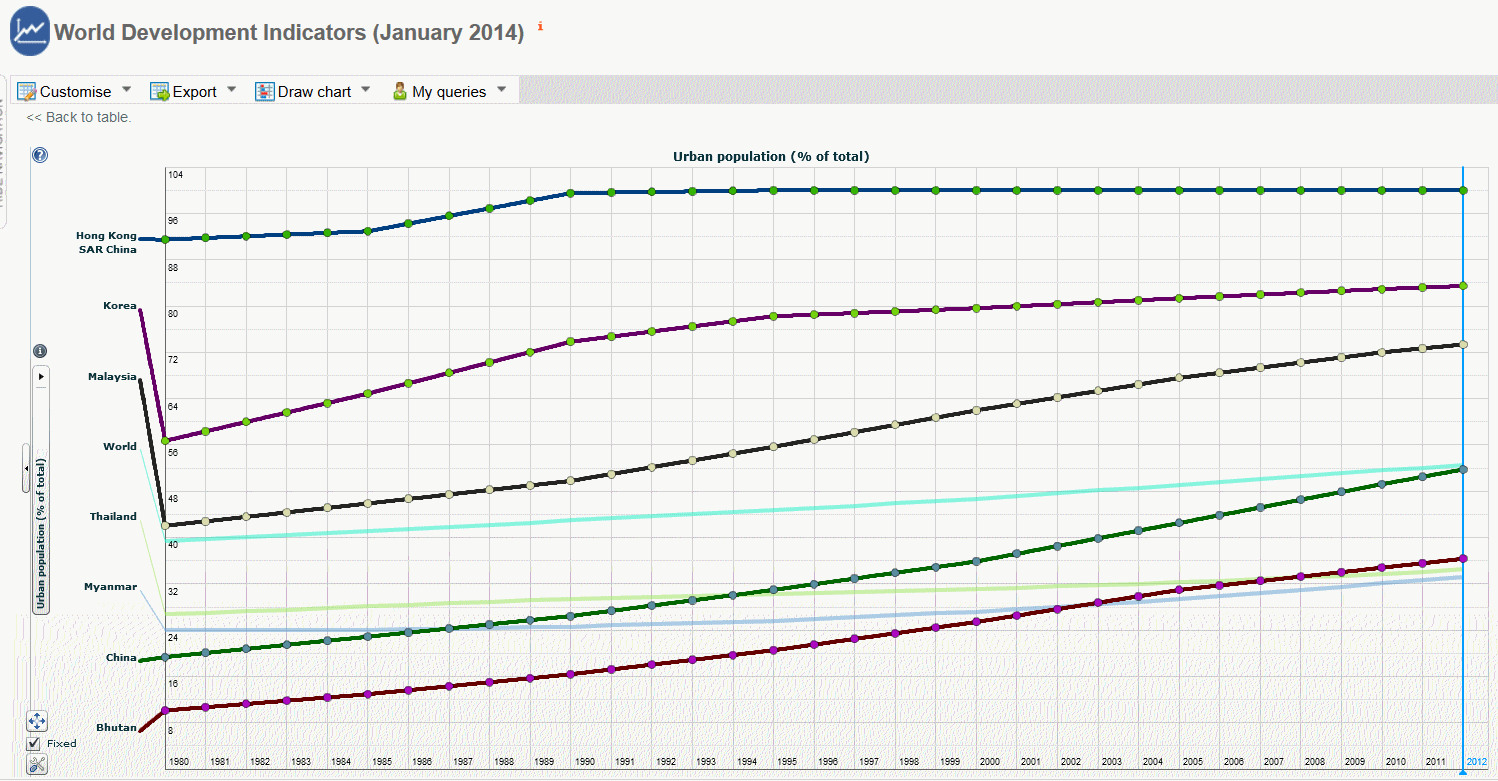This graph, based on the World Bank World Development Indicators shows the how the percentage of population that live in a cities has changed over time for selected Asian countries. From the graph, you can see that in city states such as Hong Kong almost everyone lives in a city. The industrialising countries are also urbanising at a rapid rate.

The process of urbanisation tends to be most advanced in the higher income countries, where almost 80% of the population already live in metropolitan areas. This figure drops to 50% for middle income countries. In low income countries the majority of people still live in the countryside. However, these regions are showing the fastest rate of urban growth and it is projected almost all the world's total population growth between 2000 and 2030 will take place in the cities of these countries
The graph also includes the data for the world as a whole. By 2007, for the first time in human history, more than half the people in the world were living in cities. As the chart shows, this is the result of the result of a continuing movement of people that has lead to a tremendous growth in urban areas around the world.